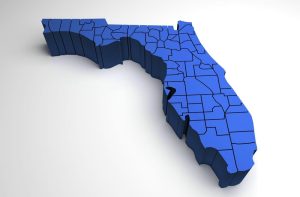 Florida’s history is rich and varied, spanning thousands of years and marked by significant cultural, social, and political changes. Here’s an overview:
Florida’s history is rich and varied, spanning thousands of years and marked by significant cultural, social, and political changes. Here’s an overview:
Pre-European Era
– **Indigenous Peoples**: Before European contact, Florida was inhabited by various Native American groups such as the Timucua, Calusa, Apalachee, and Tequesta. These groups had complex societies with rich cultures, engaging in farming, fishing, and trade.
European Exploration and Colonization
– **1513: Juan Ponce de León**: Spanish explorer Juan Ponce de León is traditionally credited with the European discovery of Florida. He named the region “La Florida” during Pascua Florida (Festival of Flowers).
– **16th Century**: Spanish explorers and missionaries established various settlements and missions. However, due to resistance from indigenous populations and other challenges, many early attempts at colonization failed.
– **1565: St. Augustine**: Founded by Pedro Menéndez de Avilés, St. Augustine is the oldest continuously inhabited European-established settlement in the continental United States.
Colonial Era
– **Spanish and British Rule**: Over the next two centuries, control of Florida changed hands multiple times between Spain and Britain.
– **1763**: Spain ceded Florida to Britain in exchange for Havana, Cuba, after the Seven Years’ War.
– **1783**: Britain returned Florida to Spain following the American Revolution.
American Territory and Statehood
– **1819: Adams-Onís Treaty**: Spain ceded Florida to the United States in exchange for the U.S. renouncing any claims on Texas and paying $5 million to American citizens with claims against Spain.
– **1821**: Florida officially became a U.S. territory.
– **1830s-1840s**: Conflicts with Native American groups, particularly the Seminole Wars, marked this period as the U.S. government attempted to relocate indigenous populations.
– **1845**: Florida was admitted to the Union as the 27th state.
Civil War and Reconstruction
– **1861-1865**: Florida seceded from the Union and joined the Confederacy during the Civil War. The state was a significant supplier of goods to the Confederate forces.
– **Post-War Period**: After the war, Florida underwent Reconstruction, which was marked by political and social upheaval and the reintegration of the state into the Union.
20th Century
– **Early 20th Century**: Florida experienced significant growth, especially in the real estate and tourism industries. The development of railroads by figures such as Henry Flagler was crucial to this growth.
– **1920s**: A major land boom occurred, followed by a bust that contributed to the Great Depression’s impact on the state.
– **World War II**: Florida’s strategic location made it an important site for military training and operations.
Post-War Growth
– **Mid-20th Century**: The post-war era saw a population explosion, driven by retirees and the expansion of the tourism industry, particularly with the opening of Walt Disney World in 1971.
– **Space Program**: The establishment of NASA’s Kennedy Space Center in the 1960s cemented Florida’s role in the U.S. space program.
Modern Era
– **Late 20th to Early 21st Century**: Florida continues to grow rapidly, becoming the third most populous state in the U.S. Its economy diversified, with significant contributions from tourism, agriculture, aerospace, and international trade.
– **Environmental Challenges**: The state faces ongoing issues related to environmental conservation, climate change, and hurricane preparedness.
Florida’s history reflects a tapestry of cultural influences and significant events that have shaped its development into a major U.S. state with a diverse population and economy.




